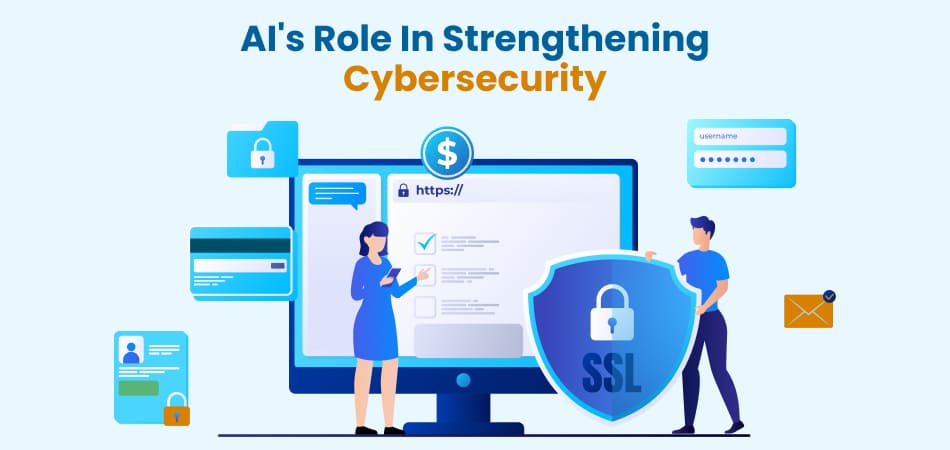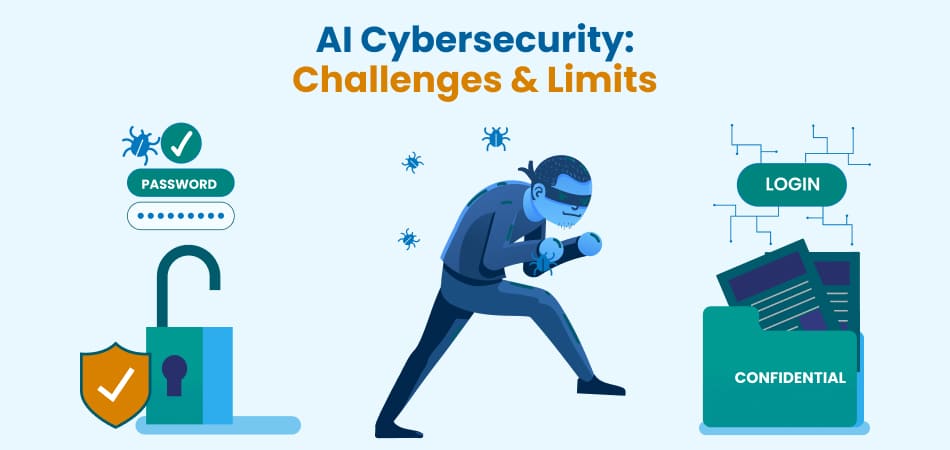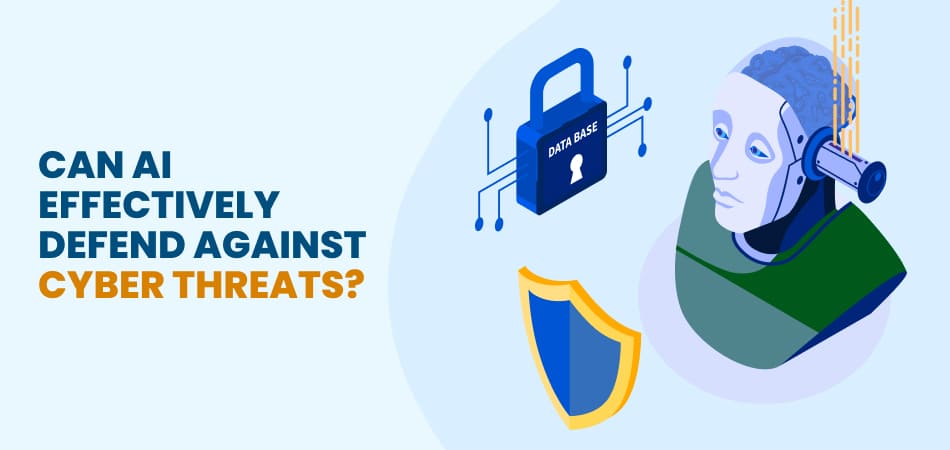Introduction
In today’s digital age, cyber threats have become more sophisticated and widespread, targeting individuals, businesses, and governments alike. With the increasing complexity of cyberattacks, traditional security measures often fall short in detecting and mitigating threats in real time. This is where Artificial Intelligence (AI) is stepping in, revolutionizing cybersecurity by enhancing threat detection, response strategies, and overall security infrastructure. But can AI truly provide a strong shield against cyber threats? Let’s explore its potential, limitations, and effectiveness in detail.
Understanding AI in Cybersecurity
Artificial Intelligence in cybersecurity refers to the use of machine learning, deep learning, and other AI-driven techniques to identify, prevent, and mitigate cyber threats. AI-powered security systems analyze massive datasets, recognize patterns, detect anomalies, and respond to attacks faster than human intervention.
How AI Works in Cybersecurity
AI-driven cybersecurity systems leverage advanced techniques such as:
- Machine Learning (ML): Identifies patterns in data to detect potential threats.
- Natural Language Processing (NLP): Analyzes text-based threats such as phishing emails.
- Deep Learning: Mimics human intelligence to detect and counteract new attack vectors.
- Behavioral Analysis: Identifies unusual user behavior that could indicate a cyber threat.
- Automated Threat Response: Deploys predefined security measures without human intervention.
- Threat Intelligence: AI collects, processes, and analyzes global cyber threat data to predict and mitigate risks before they escalate.

How AI Enhances Cybersecurity Measures
AI is transforming cybersecurity through its ability to analyze vast amounts of data, detect cyber threats in real time, and automate response mechanisms. Here’s how AI enhances cybersecurity:
1. Advanced Threat Detection
AI enables early detection of malware, phishing attempts, ransomware, and other cyber threats. By analyzing behavioral patterns and historical data, AI can identify even the most sophisticated cyberattacks before they infiltrate a system.
2. Real-Time Incident Response
AI-powered systems can autonomously respond to cyber threats, minimizing damage. Automated response mechanisms include isolating infected devices, blocking malicious IP addresses, and deploying security patches in real time.
3. Improved Vulnerability Management
AI continuously scans systems for vulnerabilities and suggests remediation measures. It prioritizes security weaknesses based on potential risks and proactively recommends patches to strengthen defenses.
4. Predictive Analysis & Threat Intelligence
Using predictive analytics, AI anticipates potential cyber threats before they occur. By analyzing global cybersecurity trends, AI helps organizations stay ahead of evolving threats.
5. Phishing and Social Engineering Attack Prevention
AI-powered email filters and security tools analyze emails, social media messages, and chat conversations to detect phishing attempts and social engineering attacks.
6. Enhanced Endpoint Security
AI enhances endpoint security by continuously monitoring devices for suspicious activities and responding to anomalies before they escalate into full-blown attacks.
7. Network Security Enhancement
AI identifies unusual network traffic patterns and detects potential intrusions, preventing unauthorized access to sensitive data.
8. Fraud Detection in Financial Transactions
Financial institutions use AI to detect fraudulent activities by analyzing customer transaction patterns and flagging unusual transactions.
9. AI in Cloud Security
Cloud security has become a significant concern as organizations migrate their infrastructure to cloud-based platforms. AI enhances cloud security by monitoring cloud activity, detecting unauthorized access, and identifying potential vulnerabilities in real time. It helps secure multi-cloud environments and prevents data breaches before they occur.
10. AI and IoT Security
With the rise of the Internet of Things (IoT), AI plays a crucial role in securing connected devices. AI-powered security solutions analyze IoT device behavior and detect anomalies that indicate potential cyber threats, ensuring a safer ecosystem for smart devices.
11. AI in Zero Trust Security Models
AI is integral to implementing Zero Trust architecture, which assumes that every user, device, and network connection is untrusted until verified. AI-powered authentication systems continuously monitor user behavior, detect suspicious login attempts, and enforce access controls to prevent unauthorized access.
AI vs. Traditional Cybersecurity Approaches
To understand the effectiveness of AI in cybersecurity, let’s compare AI-driven security measures with traditional approaches.
| Feature | AI-Powered Cybersecurity | Traditional Cybersecurity |
| Threat Detection Speed | Real-time, proactive detection | Reactive detection (after breach) |
| Adaptability | Continuously learns and evolves | Static rules and signatures |
| Response Time | Instant automated response | Requires manual intervention |
| Accuracy | High accuracy with reduced false positives | Higher false positives and human errors |
| Scalability | Easily scales with large datasets | Limited by human resources |
| Cost Efficiency | Reduces operational costs in the long run | Higher costs due to manual efforts |

Challenges and Limitations of AI in Cybersecurity
Despite its potential, AI also has limitations that need to be addressed.
1. False Positives & False Negatives
AI may incorrectly flag legitimate activities as threats or fail to detect new types of cyberattacks, leading to security risks.
2. Adversarial Attacks
Hackers can manipulate AI algorithms by feeding them misleading data to evade detection.
3. High Implementation Costs
Deploying AI-driven cybersecurity solutions requires significant investment in infrastructure and expertise.
4. Ethical Concerns
The use of AI in cybersecurity raises privacy concerns, especially with data collection and surveillance.
5. Dependence on Data Quality
AI’s effectiveness depends on high-quality, diverse datasets. Poor-quality data can lead to inaccurate threat detection.
The Role of AI in Different Sectors
AI is being utilized across various industries to strengthen cybersecurity measures:
| Industry | AI Cybersecurity Application |
| Healthcare | Protects patient data from cyber threats and detects fraudulent activities. |
| Finance | Prevents fraud, detects abnormal transactions, and secures online banking. |
| Retail | Enhances e-commerce security by preventing data breaches and payment fraud. |
| Government | Strengthens national cybersecurity by preventing cyber espionage and attacks. |
| Manufacturing | Protects intellectual property and ensures supply chain security. |
Future of AI in Cybersecurity
The future of AI in cybersecurity looks promising, with advancements in quantum computing, blockchain integration, and federated learning expected to enhance AI-driven security measures. AI will play a crucial role in:
- Self-Healing Systems – AI will enable security systems to autonomously detect and fix vulnerabilities.
- Hyper-Automation in Cybersecurity – Combining AI with automation for faster and more efficient threat response.
- AI-Driven Security Orchestration – Integration of AI with cybersecurity frameworks to create a more holistic security ecosystem.
- AI-Backed Threat Hunting – AI will proactively search for cyber threats before they cause damage.
Conclusion
AI is undeniably a game-changer in cybersecurity, offering advanced threat detection, real-time response, and predictive intelligence. While it is not a foolproof solution, AI significantly strengthens cybersecurity measures when integrated with human expertise and traditional security protocols. As cyber threats evolve, AI will continue to play a pivotal role in building a safer digital world.
However, organizations must approach AI-driven cybersecurity with caution, balancing its benefits with potential risks. By combining AI with robust security policies, ethical considerations, and continuous updates, businesses and individuals can create a resilient defense against cyber threats.
In the ongoing battle between cybersecurity experts and hackers, AI is a powerful ally—but it is not the ultimate solution. The future of cybersecurity lies in a collaborative approach, leveraging AI alongside human intelligence to stay ahead of emerging threats.



